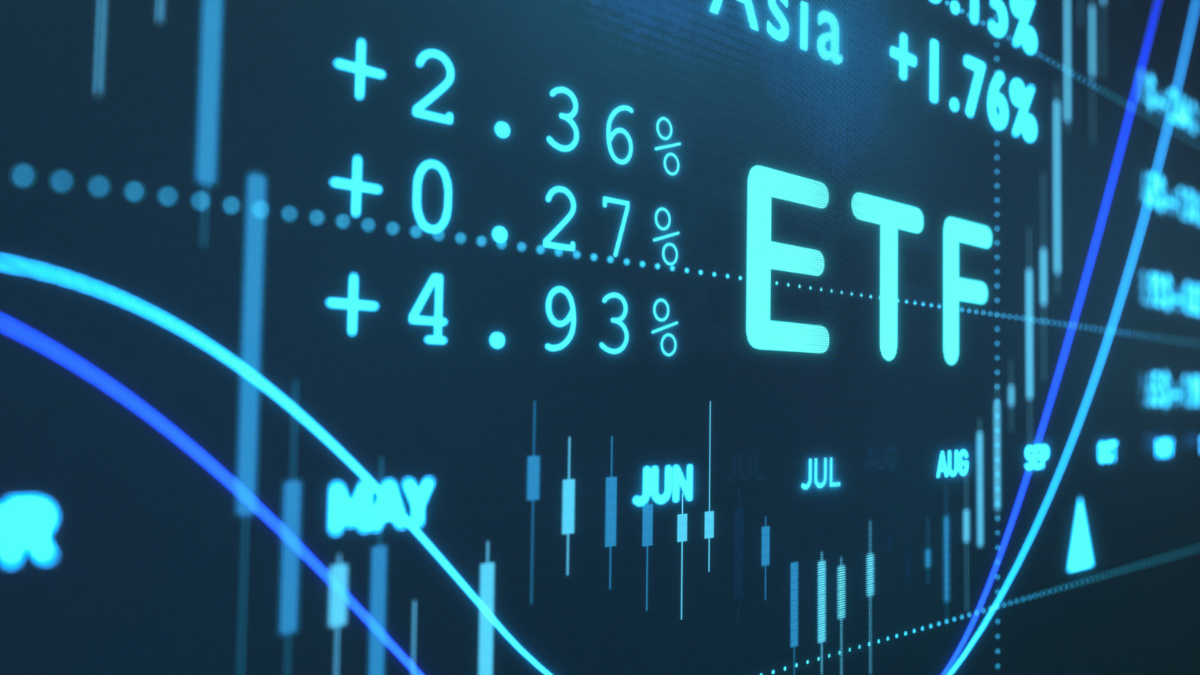Aussies love for ETFs grows in 2024, Global X says sector could hit $1 trillion in AUM by 2030

Australia's ETF market is growng faster than the US. Pic: Getty Images
- Global X forecasts the Australian ETF sector may hit $1 trillion in AUM by 2030
- ETF sector potentially on track to surpass calendar year record of $23.6bn net flows set in 2021
- Artificial intelligence (AI), regional pockets of investor interest, and fixed income three main trends in 2024
Aussie investors love affair with exchange-traded-funds (ETFs) remains strong in 2024 with Global X forecasting the industry may hit $1tn in assets under management (AUM) by 2030.
In its Australian ETF Landscape H1 2024 report Global X said year-to-date net flows of $10.8bn for 2024 mark the strongest start ever for the sector, which is on track to surpass the calendar year record of $23.6bn set in 2021 if momentum continues.
The Australian ETF sector has grown by 37.3% over the past year to $206.2bn AUM across 380 products.
Global X product and investment strategist Marc Jocum said it took nearly 20 years to reach $100bn, but the next $100bn was achieved in just over three years.
“Today, the Australian ETF market is growing at a faster rate than the US and has quadrupled its share in the Australian funds market over the past six years,” he said.
However, Jocum said the market penetration is still in its infancy, with ETFs accounting for just under 5% of the total
Australian funds market.
“We expect traditional managed funds to continue to be at risk of losing their assets over the coming decade to lower-cost vehicles like ETFs,” he said.
“If the Australian ETF growth rate continues at the same historical trajectory, the industry may hit $1 trillion dollars by 2030.”
Australian ETF market

Global shares ETFs popular in 2024 & AI key trend
Jocum said while bond ETFs were one of the most popular asset classes in 2023, capturing 37% of the yearly net flows it is a different story in 2024 with investor positioning changed to “risk-on”.
“Global shares have been the most popular asset class among Australian investors this year, with around $6bn allocated to this category so far in 2024, representing 55% of the total market net flows,” he said.
“Artificial intelligence (AI), regional pockets of investor interest, and fixed income are the three main trends which we expect will accelerate into the second half of 2024.
He said investors may choose to focus on the broader AI ecosystem, including technology, semiconductors, infrastructure, and data centre renewable energy sources.
“Although the US has outperformed other global regions since the start of the 2010s, other countries and regions may begin to catch up,” he said.
“European ETFs may attract more interest due to attractive valuations and similar sales growth profiles, while India continues to thrive and could overtake China as the main emerging market in investor portfolios.”
Jocum said despite some central banks cutting interest rates, the Reserve Bank of Australia (RBA) may maintain higher rates amidst persistent inflation.
“If this scenario eventuates, it makes fixed income securities with yields higher than traditional government bonds or term deposits an attractive proposition,” he said.
“With Australia’s share market dividend yield declining over the past year, high-quality fixed income securities offer opportunities to enhance portfolio income.
“We anticipate continued strong momentum in fixed income flows throughout 2024.”
More active ETFs enter market
Jocum said over the past year, there have been 70 new product launches with more than half of the new ETFs entering the market as active ETFs.
He said this reflects a growing trend of existing unlisted managed funds being converted into ETFs or new share classes of these funds being created.
However, he said active ETFs still remain less popular than passive ETFs, designed to replicate performance of a specific index or asset class.
“While active ETFs have accounted for the bulk of new launches and nearly half of the industry’s total fee revenue, they represent only one-fifth of the total Australian ETF market and have seen consistent outflows over the past couple of years,” he said.
ETFs are known for their low fees and Jocum said investors are still drawn to those offering cost efficiency with 75% of ETF net flows being directed towards products charging 0.25% or less per year in fees, while funds charging more than 1% are being shunned.
“This trend highlights the cost-conscious nature of investors, who increasingly prefer lower-cost investment options to simplify their investments and get asset class exposure at a cheaper fee tier,” he said.
Global X head of sales Manny Damianakis said the report had become a staple for the ETF provider and its clients since its inception more than eight years ago.
“In this time, we have seen the local ETF market go from strength to strength – expanding and innovating to evolve alongside investor needs,” he said.
“As Australia’s ETF industry experts, our landscape is designed to empower investors from all walks of life with the latest insights they need to make informed decisions. “
Related Topics
UNLOCK INSIGHTS
Discover the untold stories of emerging ASX stocks.
Daily news and expert analysis, it's free to subscribe.
By proceeding, you confirm you understand that we handle personal information in accordance with our Privacy Policy.








